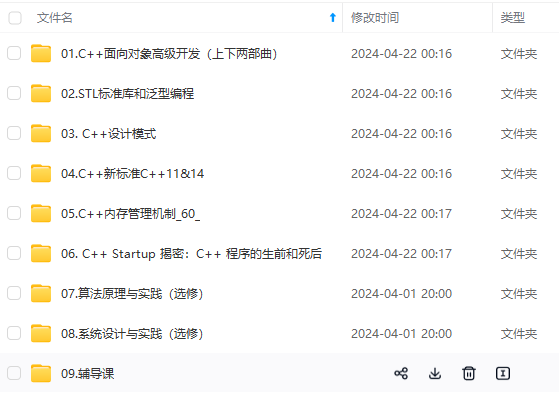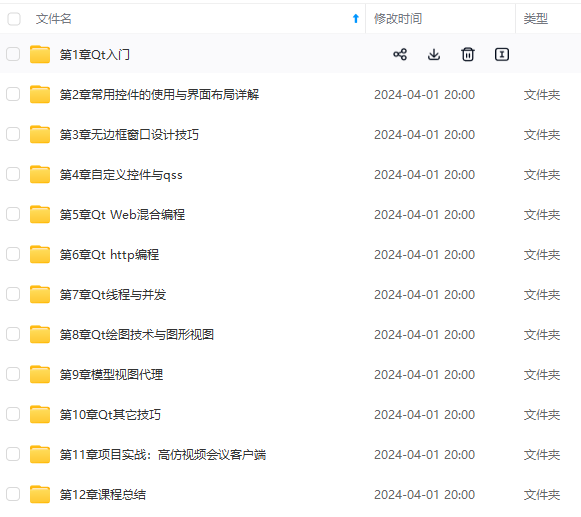

网上学习资料一大堆,但如果学到的知识不成体系,遇到问题时只是浅尝辄止,不再深入研究,那么很难做到真正的技术提升。
一个人可以走的很快,但一群人才能走的更远!不论你是正从事IT行业的老鸟或是对IT行业感兴趣的新人,都欢迎加入我们的的圈子(技术交流、学习资源、职场吐槽、大厂内推、面试辅导),让我们一起学习成长!
private String statusDes;
static OrderStatusEnum of(String status) {
for (OrderStatusEnum statusEnum : OrderStatusEnum.values()) {
if (statusEnum.getStatus().equals(status)) {
return statusEnum;
}
}
return null;
}
}
有了这个枚举,上面代码直接可以优化为一行代码:
String orderStatusDes = OrderStatusEnum.of(orderStatus).getStatusDes();
当然一般在实际项目中,这种处理方式也不是最佳的,最佳的方式应该是在数据库里面有一个码值配置表,然后加载到系统缓存中来,在通过 code 去取值。当然枚举也是一种很好的解决方案。
### 方案三:Optional 判空
我相信各位小伙伴的项目里面一定存在非空判断,如果为空,则抛出异常或者 return。
Order order = getOrderById(id);
if (order == null) {
return “-1”;
} else {
return order.getOrderStatus();
}
对于这种代码我们利用 Optional 可以非常优雅地解决。
return Optional.ofNullable(order).map(o -> o.getOrderStatus()).orElse(“-1”);
这种方式是不是非常优雅,有格调。最后补充一句:
>
> **防止 NPE,是程序员的基本修养**
>
>
>
### 方案四:表驱动法
表驱动法,是一种让你可以在表中查找信息,而不必用过多的 if...else 来把他们找出来的方法。如下:
if (“code1”.equals(action)) {
doAction1();
} else if (“code2”.equals(action)) {
doAction2();
} else if (“code3”.equals(action)) {
doAction3();
} else if (“code4”.equals(action)) {
doAction4();
} else if (“code5”.equals(action)) {
doAction5();
}
优化方法如下:
Map<String, Function<?> action> actionMap = new HashMap<>();
action.put(“code1”,() -> {doAction1()});
action.put(“code2”,() -> {doAction2()});
action.put(“code3”,() -> {doAction3()});
action.put(“code4”,() -> {doAction4()});
action.put(“code5”,() -> {doAction5()});
// 使用
actionMap.get(action).apply();
其实这种方式也不是很好,因为它会显得代码非常臃肿。一种变形方案是将 `doAction()` 抽象成类。如下:
//1. 先定义一个 ActionService 接口
public interface ActionService {
void doAction();
}
//2. 然后定义 5 个实现类
public class ActionService1 implements ActionService{
public void doAction() {
//do something
}
}
//3. 加入表中
Map<String, ActionService> actionMap = new HashMap<>();
action.put(“code1”,new ActionService1());
action.put(“code2”,new ActionService2());
action.put(“code3”,new ActionService3());
action.put(“code4”,new ActionService4());
action.put(“code5”,new ActionService5());
//4. 调用
actionMap.get(action).doAction();
这种方式是不是比较优雅些!
### 方案五:策略模式 + 工厂方法
策略模式 + 工厂方法是解决 if...else 用得非常多的方案,它和上面的表驱动法有点儿类似。使用策略模式 + 工厂方法分为几个步骤,以上面例子为例:
* **把条件模块抽象为一个公共的接口,策略接口**
public interface ActionService {
void doAction();
}
* **根据每个逻辑,定义出自己具体的策略实现类**,如下:
public class ActionService1 implements ActionService{
public void doAction() {
//do something
}
}
public class ActionService2 implements ActionService{
public void doAction() {
//do something
}
}
// 省略其他策略
* **工厂类,统一调度,用来管理这些策略**,如下:
public class ActionServiceFactory {
private ActionServiceFactory(){
}
private static class SingletonHolder{
private static ActionServiceFactory instance=new ActionServiceFactory();
}
public static ActionServiceFactory getInstance(){
return SingletonHolder.instance;
}
private static final Map<String,ActionService> ACTION_SERVICE_MAP = new HashMap<String, ActionService>();
static {
ACTION_SERVICE_MAP.put("action1",new ActionService1());
ACTION_SERVICE_MAP.put("action2",new ActionService2());
ACTION_SERVICE_MAP.put("action3",new ActionService3());
ACTION_SERVICE_MAP.put("action4",new ActionService4());
ACTION_SERVICE_MAP.put("action5",new ActionService5());
}
public static ActionService getActionService(String actionCode) {
ActionService actionService = ACTION_SERVICE_MAP.get(actionCode);
if (actionService == null) {
throw new RuntimeException("非法 actionCode");
}
return actionService;
}
public void doAction(String actionCode) {
getActionService(actionCode).doAction();
}
}
单例模式实现工厂类。
* **使用**
ActionServiceFactory.getInstance().doAction(“action1”);
这种优化方式也是很优雅的,特别适合分支较多,逻辑较为复杂的代码块,这种方式将分支逻辑与业务代码解耦了,是一种很不错的方案。
### 方案六:责任链模式
你想不到责任链模式也能优化 if...else 吧。责任链我们可以看做是一个单链表的数据结构,一个对象一个对象地过滤条件,符合的就执行,然后结束,不符合的就传递到下一个节点,如果每个对象都无法处理,一般都有一个最终的节点来统一处理。
我们依然以上面那个例子为例。
* **定义责任链处理请求节点**
public abstract class ActionHandler {
// 后继节点
protected ActionHandler successor;
/**
* 处理请求
* @param actionCode
*/
public void handler(String actionCode) {
doHandler(actionCode);
}
// 设置后继节点
protected ActionHandler setSuccessor(ActionHandler successor) {
this.successor = successor;
return this;
}
// 处理请求
public abstract void doHandler(String actionCode);
}
* **定义首尾节点,用于一些异常情况的处理**
// 首节点,判断 actionCode 是否为空
public class HeadHandler extends ActionHandler{
@Override
public void doHandler(String actionCode) {
if (StringUtils.isBlank(actionCode)) {
throw new RuntimeException("actionCode 不能为空");
}
successor.doHandler(actionCode);
}
}
// 尾节点,直接抛出异常,因为到了尾节点说明当前 code 没有处理
public class TailHandler extends ActionHandler{
@Override
public void doHandler(String actionCode) {
throw new RuntimeException("当前 code[" + actionCode + "] 没有具体的 Handler 处理");
}
}
* **定义各个节点具体的实现节点**
public class ActionHandler1 extends ActionHandler{
@Override
public void doHandler(String actionCode) {
if ("action1".equals(actionCode)) {
doAction1();
} else {
// 传递到下一个节点
successor.doHandler(actionCode);
}
}
}
public class ActionHandler2 extends ActionHandler{
@Override
public void doHandler(String actionCode) {
if ("action2".equals(actionCode)) {
doAction2();
} else {
// 传递到下一个节点
successor.doHandler(actionCode);
}
}
}
// 省略其他节点
* **定义工厂,来构建一条完整的责任链,并负责调度**
public class ActionHandlerFactory {
private ActionHandler headHandler;
private ActionHandlerFactory(){
headHandler = new HeadHandler();
ActionHandler actionHandler1 = new ActionHandler1();
ActionHandler actionHandler2 = new ActionHandler2();
ActionHandler actionHandler3 = new ActionHandler3();
ActionHandler actionHandler4 = new ActionHandler4();
ActionHandler actionHandler5 = new ActionHandler5();
ActionHandler tailHandler = new TailHandler();
// 构建一条完整的责任链
headHandler.setSuccessor(actionHandler1).setSuccessor(actionHandler2).setSuccessor(actionHandler3).
setSuccessor(actionHandler4).setSuccessor(actionHandler5).setSuccessor(tailHandler);
}
private static class SingletonHolder{
private static ActionHandlerFactory instance=new ActionHandlerFactory();
}
public static ActionHandlerFactory getInstance(){
return SingletonHolder.instance;
}
public void doAction(String actionCode) {
headHandler.doHandler(actionCode);
}
}
* **使用**
ActionHandlerFactory.getInstance().doAction(“action1”);
### 方案七:Function


**既有适合小白学习的零基础资料,也有适合3年以上经验的小伙伴深入学习提升的进阶课程,涵盖了95%以上C C++开发知识点,真正体系化!**
**由于文件比较多,这里只是将部分目录截图出来,全套包含大厂面经、学习笔记、源码讲义、实战项目、大纲路线、讲解视频,并且后续会持续更新**
**[如果你需要这些资料,可以戳这里获取](https://bbs.csdn.net/topics/618668825)**
* **使用**
ActionHandlerFactory.getInstance().doAction(“action1”);
### 方案七:Function
[外链图片转存中...(img-POH0aRBA-1715537967332)]
[外链图片转存中...(img-4Hxv9cDa-1715537967333)]
**既有适合小白学习的零基础资料,也有适合3年以上经验的小伙伴深入学习提升的进阶课程,涵盖了95%以上C C++开发知识点,真正体系化!**
**由于文件比较多,这里只是将部分目录截图出来,全套包含大厂面经、学习笔记、源码讲义、实战项目、大纲路线、讲解视频,并且后续会持续更新**
**[如果你需要这些资料,可以戳这里获取](https://bbs.csdn.net/topics/618668825)**























 被折叠的 条评论
为什么被折叠?
被折叠的 条评论
为什么被折叠?








